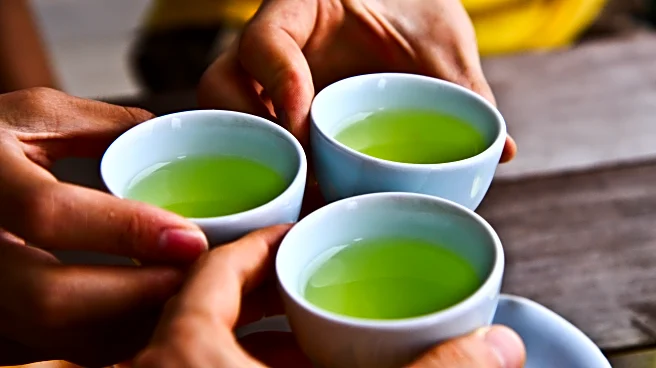What's Happening?
Star anise evening tea is experiencing renewed interest as a comforting ritual during cold weather. Known for its sweet, liquorice-like aroma, the tea is derived from the fruit of Illicium verum, native
to southern China and Vietnam. Historically used in Asian herbal medicine, star anise has gained attention due to its connection to shikimic acid, a compound important in antiviral drug research. However, experts emphasize that the tea itself is not antiviral but offers digestive comfort, respiratory support, and relaxation benefits. The tea is caffeine-free, making it ideal for evening relaxation, and can be enhanced with honey, ginger, or cinnamon for added flavor and warmth.
Why It's Important?
The resurgence of star anise tea highlights a blend of traditional herbal wisdom and modern scientific interest. While not a medical treatment, its supportive benefits during cold weather make it a popular choice for those seeking natural wellness solutions. The tea's ability to provide digestive relief and respiratory comfort can be particularly beneficial during the winter months when such issues are more prevalent. Additionally, its calming properties may aid in better sleep, offering a holistic approach to wellness. This trend reflects a growing interest in natural remedies and the integration of ancient practices into contemporary lifestyles.
What's Next?
As interest in star anise tea grows, consumers are advised to ensure safety by using only Chinese star anise (Illicium verum) and avoiding the toxic Japanese star anise (Illicium anisatum). Pregnant or breastfeeding women and young children should consult healthcare professionals before regular consumption. The tea's popularity may lead to increased availability in herbal stores and grocery outlets, potentially sparking further research into its bioactive compounds and traditional uses. This could also encourage more people to explore other herbal teas and natural remedies for wellness.
Beyond the Headlines
The renewed interest in star anise tea underscores a cultural shift towards embracing traditional herbal practices in modern wellness routines. It highlights the importance of understanding the distinction between supportive herbal remedies and medical treatments. As consumers become more informed about the benefits and safety of herbal infusions, there may be a broader acceptance and integration of such practices into daily life, promoting a balanced approach to health and well-being.














